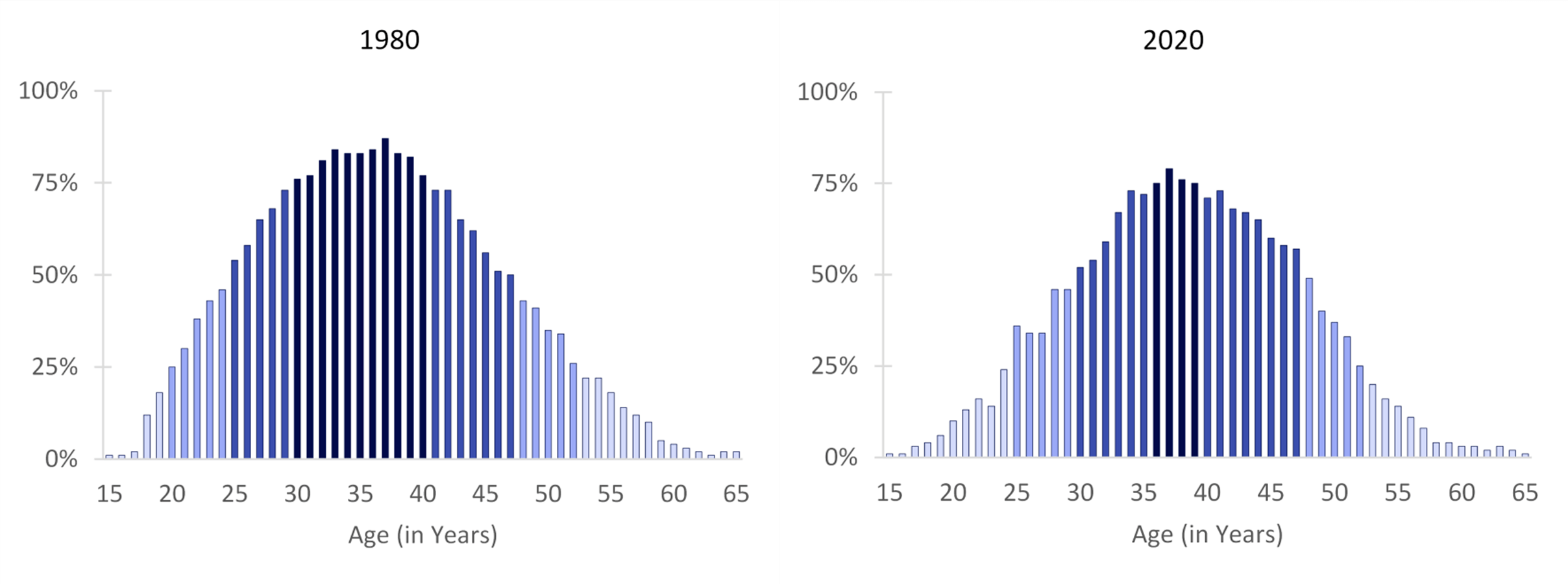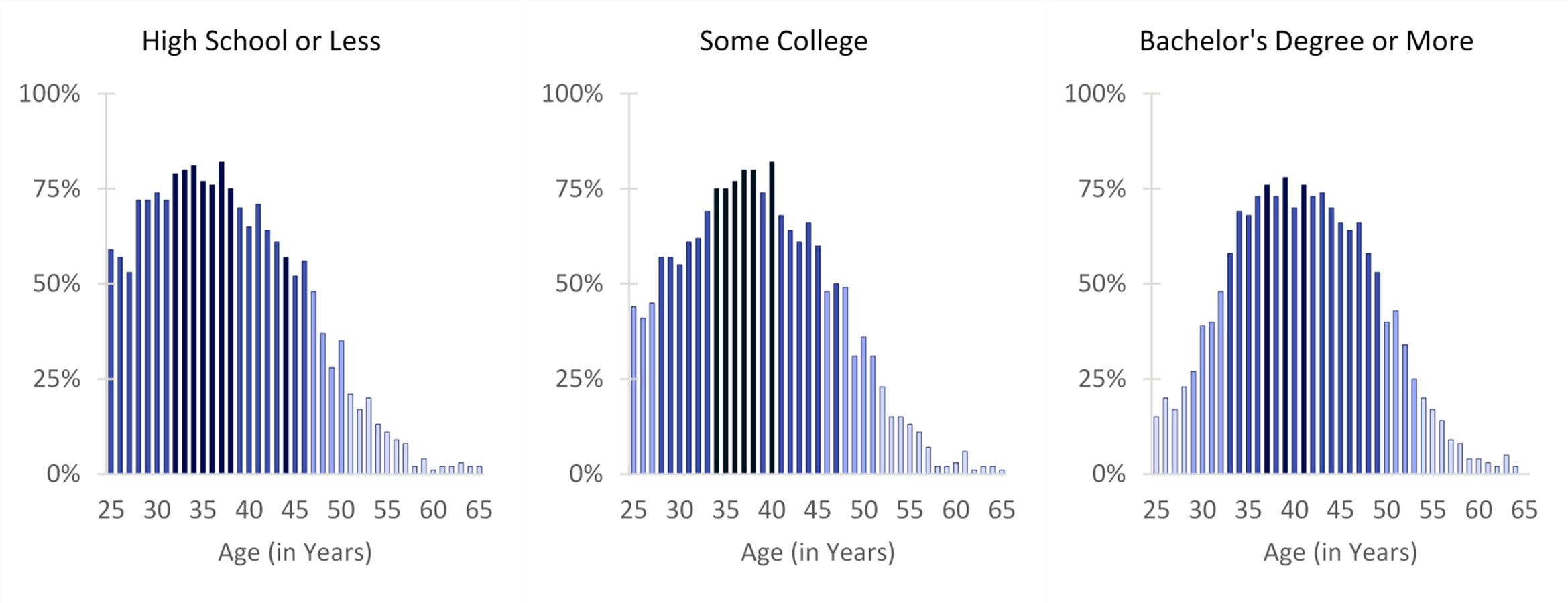Women’s Prime Parenting Years, 1980 & 2020
Family Profile No. 20, 2022
Author: Adrianne R. Brown
The past few decades have seen major shifts in childbearing behavior. The overall share of women who have ever had a birth has declined, the mean age at first birth has increased, and the share of women with three or more children has decreased (FP-22-19, FP-20-06, FP-20-04). These changes affect the number of years, as well as the ages, women spend parenting minor children. This profile uses data from the 1980 and 2020 June Fertility Supplement of the Current Population Survey (CPS) to estimate changes in the share of women who are in their prime parenting years and, for 2020, we focus on educational differences in the primary parenting years. We define prime parenting years as the age group at which over 75% of women were parenting a child aged 0 to 17. We estimate the ages spent parenting based on women’s age at entry into motherhood and women’s age at which her youngest current biological, adopted or stepchild will turn 18, essentially allowing us to capture the age women started parenting and can expect to complete parenting minor children. This is then applied to singular ages to estimate the share of women at each age who were parenting a minor child. The range of parenting years depends not only on the age at which women first have a child but also on the number and spacing of children. The figures below are color coded by quartile such that the darkest color represents a share of 75% or more at that age and the lightest color represents a share below 25% at that age.
Change in Women’s Prime Parenting Years, 1980 & 2020
- As the median age of mothers shifted from 34 in 1980 to 38 in 2020, the prime parenting years (above 75%) narrowed, contracting from ages 30 to 40 in 1980 to 36 to 39 in 2020.
- In both 1980 and 2020, the share of women in prime parenting peaked at age 37, representing 87% and 79% of women, respectively.
- The end of the prime parenting ages was similar at both time points. It is notable that over one-third of women are still parenting at age 50.
- The rising age at first birth is evident in the share of women parenting at younger ages.
- The age at which the share of women parenting minor children first reached 50% increased from 25 in 1980 to 30 in 2020.
- The early 20s were more often spent parenting in 1980 than in 2020 – at age 24, for example, in 2020 less than a quarter of women (24%) were parenting in contrast to nearly half (46%) of women in 1980.
Figure 1. Share of Women Parenting by Age, 1980 & 2020

Educational Attainment
- In 2020, the median age of mothers who were parenting was 37 among those in the lowest and middle education groups and 40 among those with the highest level of education.
- The ages at which at least three-fourths of women were parenting shifted to older ages as the level of educational attainment increased.
- Women with a high school diploma or less had the widest age range at which 75% or more were parenting.
- The first age at which at least half of women were parenting was 25 for women with a high school diploma or less, 28 among those with some college, and 33 among those with a college degree.
- By age 51, less than a quarter of women with a high school diploma or less still had minor children at home. Among college-educated women, the age at which less than a quarter still had minor children was 54.
Figure 2. Share of Women Parenting by Age and Educational Attainment, 2020


Data Source:
Flood, S., King, M., Rodgers, R., Ruggles, S., Warren, J. R., & Westberry, M. (2021). Integrated Public Use Microdata Series: Current Population Survey: Version 9.0 [dataset]. Minneapolis, MN: IPUMS. https://doi.org/10.18128/D030.V9.0
References:
Brown, A. R. (2022). Forty years of change in marriage and motherhood among women, 1979 & 2020. Family Profiles, FP-22-19. Bowling Green, OH: National Center for Family & Marriage Research. https://doi.org/10.25035/ncfmr/fp-22-19
Guzzo, K. B. & Schweizer, V. (2020). Number of children to women aged 40-44, 1980-2018. Family Profiles, FP-20-04. National Center for Family & Marriage Research. https://doi.org/10.25035/ncfmr/fp-20-04
Schweizer, V. & Guzzo, K. B. (2020). Age at first birth among mothers 40-44, 1990 & 2018. Family Profiles, FP-20-06. Bowling Green, OH: National Center for Family & Marriage Research. https://doi.org/10.25035/ncfmr/fp-20-06
Suggested Citation:
Brown, A. R. (2022). Women’s prime parenting years, 1980 & 2020. Family Profiles, FP-22-20. Bowling Green, OH: National Center for Family & Marriage Research. https://doi.org/10.25035/ncfmr/fp-22-20
Updated: 11/07/2025 03:04PM


